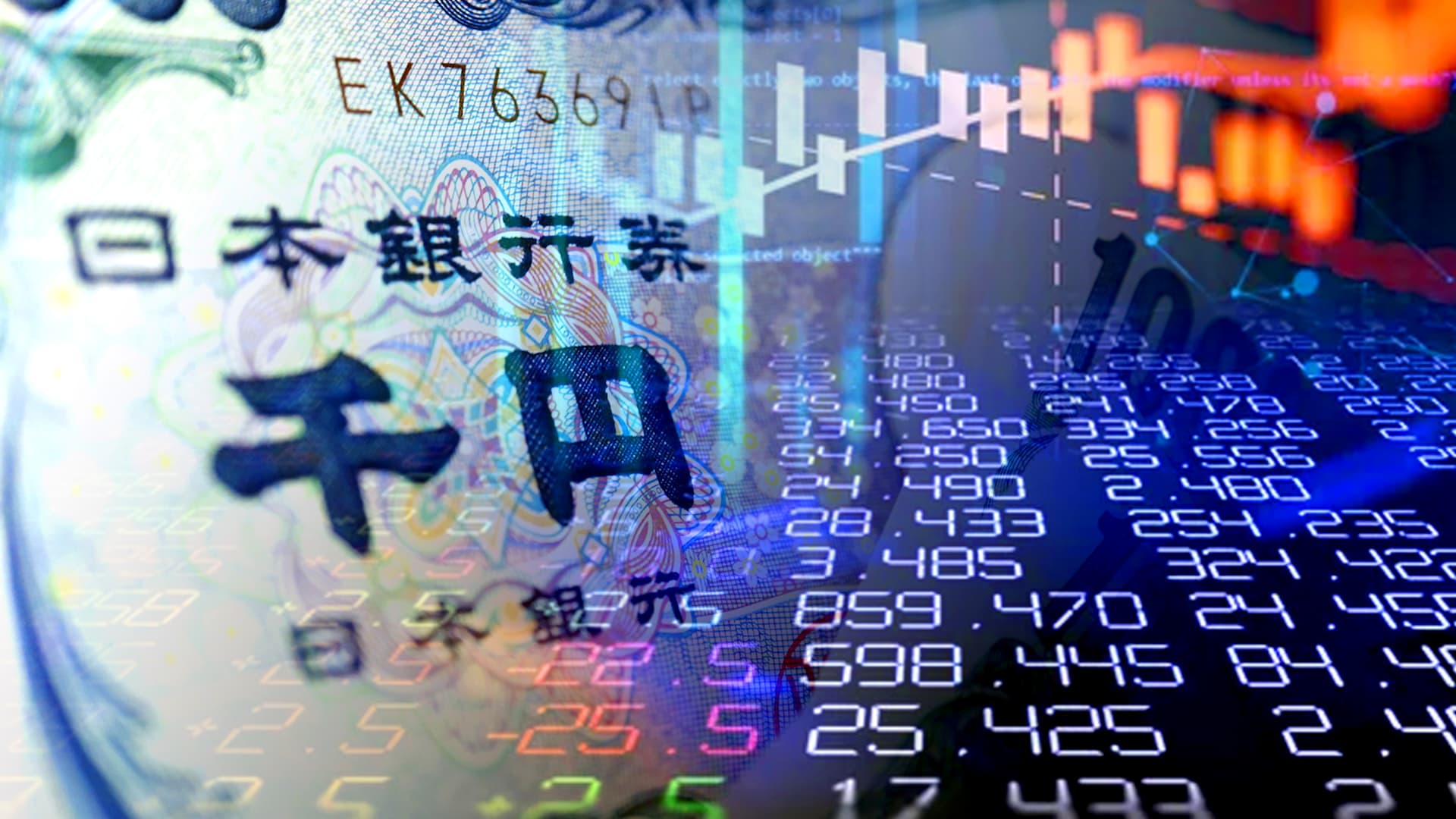
An updated editorial photograph combining images of Japanese yen bank notes with stock market indicators.
Javier Ghersi | Moment | Getty Images
Japan’s central bank maintained its ultra-loose policy and left rates unchanged on Friday, mindful of the “extremely high uncertainties” on the growth outlook domestically and globally.
In a policy statement after its September policy meeting, the Bank of Japan said it would maintain short-term interest rates at -0.1%, and cap the 10-year Japanese government bond yield around zero.
At the last policy meeting in July, the Bank of Japan loosened its yield curve control to allow longer term rates to move more in tandem with rising inflation. It was Ueda’s first policy change since assuming office in April.
The move to broaden the permissible range for 10-year JGB yields of around plus and minus 0.5 percentage points from its 0% target to 1% was seen as the start of a gradual departure from the yield curve control policy enacted by Ueda’s predecessor.
Many economists brought forward their forecasts for a quicker exit from the BOJ’s ultra-loose monetary policy to sometime in the first half of 2024 after Governor Kazuo Ueda told Yomiuri Shimbun in an interview published Sept. 9 that the BOJ could have sufficient data by the end of this year to determine when it could end negative rates.
Despite core inflation exceeding the Bank of Japan’s stated 2% target for 17 consecutive months, BOJ officials have been cautious about exiting the policy, which was put in place to combat decades of deflation in the world’s third-largest economy.
This is due to what the BOJ sees as a lack of sustainable inflation, deriving from meaningful wage growth that it believes would lead to a positive chain effect supporting household consumption and economic growth.
Core inflation — which includes oil products but excludes volatile fresh food prices — slowed in July to 3.1%, supporting the BOJ’s projection.
— This is breaking news. Please check back for updates.
